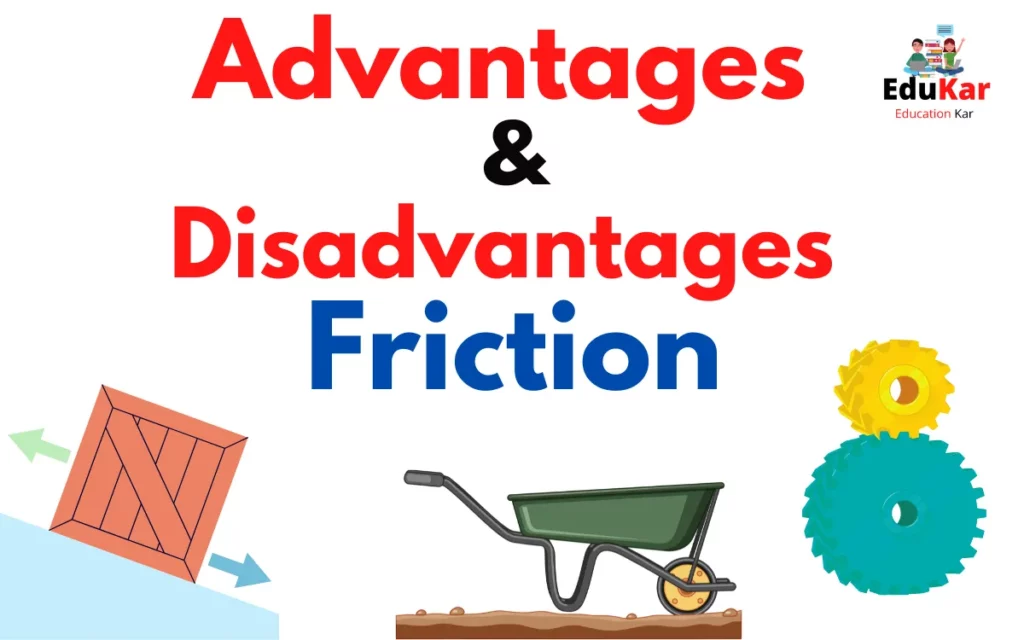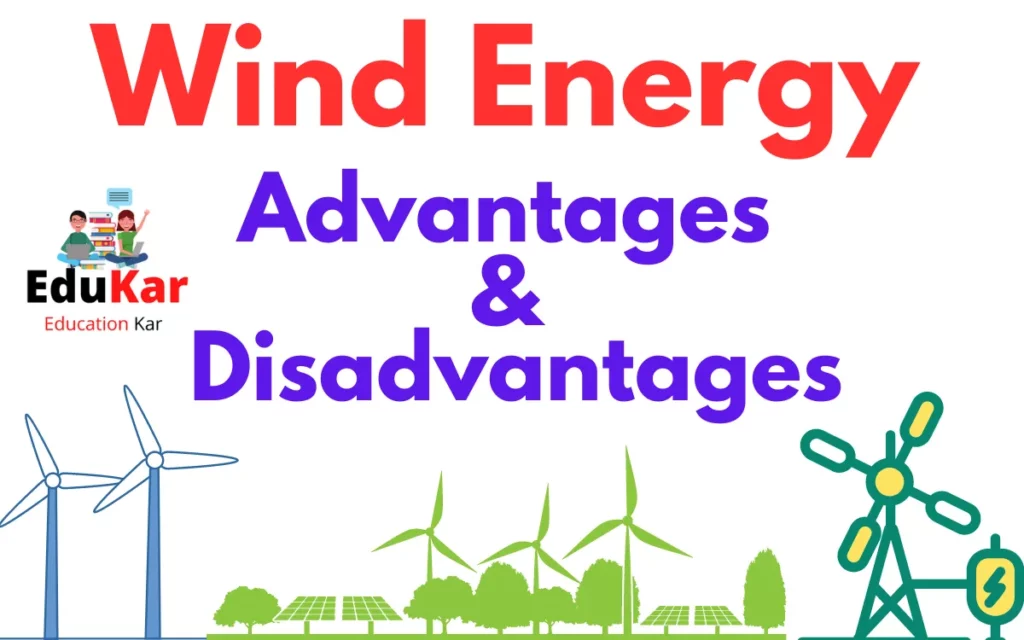Contents
- 1 What is Friction?
- 2 Advantages of Friction:
- 3 Conclusion:
- 4 FAQs:
- 4.1 What is friction?
- 4.2 What are the advantages of friction?
- 4.3 What are the disadvantages of friction?
- 4.4 How does friction help in machine operation?
- 4.5 How does friction affect precision machinery?
- 4.6 Can friction be reduced or eliminated?
- 4.7 How does friction affect energy consumption?
- 4.8 How does friction affect the wear and tear of materials?
Welcome to Edukar-Education Kar. In this article, we will explore the advantages and disadvantages of friction, examining its effects on motion, energy, and various systems.

Friction is essential for many practical applications. It provides the necessary traction for vehicles to move on roads, prevents sliding, and enables the smooth operation of machines. Friction also converts motion into heat, which is used to generate energy in a variety of industrial processes.
On the other hand, friction can also have negative effects. It generates heat and wear, which can cause damage to equipment, decrease efficiency, and increase energy consumption. Friction also requires additional energy to overcome, making it more challenging to achieve desired motions and speeds.
What is Friction?
Friction is a force that opposes motion between two objects in contact. It is a complex phenomenon that arises from the interaction between the surface of one object and the surface of another object. Friction is what makes it possible for us to walk, grip objects, and keep things from sliding around, but it can also cause wear and tear on objects and reduce the efficiency of mechanical systems.
There are two main types of friction: Static friction and kinetic friction.
Static friction is the force that opposes an initial motion and acts in the direction opposite to the intended motion. The magnitude of static friction is proportional to the normal force between the two objects, and it can be calculated using the coefficient of static friction and the normal force.
Kinetic friction is the force that opposes motion that is already occurring and acts in the direction opposite to the velocity of the objects. The magnitude of kinetic friction is proportional to the normal force and is determined by the coefficient of kinetic friction.
| Advantages of Friction | Disadvantages of Friction |
|---|---|
| 1. Enables walking and running without slipping | 1. Causes wear and tear on surfaces |
| 2. Helps vehicles stop and change direction | 2. Creates heat, leading to energy loss |
| 3. Allows us to write and draw with pens and pencils | 3. Can impede motion or cause resistance |
| 4. Helps grip objects and prevent them from slipping | 4. Can lead to injuries, such as burns or blisters |
| 5. Facilitates the use of brakes in machines | 5. Increases the amount of force required to move an object |
| 6. Allows machines to transmit power and torque | 6. Causes noise and vibrations in machinery |
| 7. Helps us to climb surfaces | 7. Causes loss of efficiency in machines |
| 8. Provides traction for vehicles on roads | 8. Can cause delays in transportation |
| 9. Allows us to hold and handle objects | 9. Creates challenges in developing high-speed machinery |
| 10. Facilitates the process of grinding, polishing, and shaping materials | 10. Increases the time and effort required for cleaning and maintenance |
Advantages of Friction:
- Slows down or stops motion: Friction acts as a force that opposes motion between two surfaces in contact, slowing down or stopping the motion entirely. This is useful in brakes that use friction to slow down or stop vehicles.
- Aids in traction: Friction is what gives tires grip on the road and allows vehicles to drive and change direction. Without friction, tires would slip on the road and make it difficult to control the vehicle.
- Enables movement by applying force: Friction is also responsible for enabling movement. It acts as a force that enables us to push or pull objects, as well as grip and hold onto things.
- Prevents slipping and sliding: Friction helps to prevent slipping and sliding, which is particularly important in activities that involve balance and stability, such as walking, running, or performing physical activities.
- Helps in machine operation: Friction is also important in machine operation as it generates heat, which helps to lubricate the moving parts, reduce wear, and prevent damage. Additionally, friction helps to transfer power and torque in machines, making it an essential component of many mechanical systems.
- Wears out materials: Friction generates heat and causes wear and tear on the surfaces in contact, leading to the eventual degradation of the materials. This can lead to equipment failure and decreased efficiency.
- Causes energy loss: Friction opposes motion and converts useful energy into heat, leading to energy loss. This can result in decreased efficiency and higher energy consumption in machines and systems.
- Increases operating costs: The increased wear and tear caused by friction can lead to increased maintenance and replacement costs, thereby increasing the operating costs of machines and systems.
- Can cause unwanted motion: Friction can also cause unwanted motion in some cases, such as when it causes objects to stick together or when it creates drag in fluids. This can result in decreased efficiency and performance.
- Hinders precise movements: Friction can also make it difficult to control precise movements, as it introduces resistance that opposes motion. This is particularly relevant in precision machinery, such as in aerospace and medical equipment, where friction can affect accuracy and precision.
- Can cause heat damage: The heat generated by friction can also cause damage to materials and components, particularly in high-heat environments, such as in engines and industrial processes. This can result in decreased reliability and performance.
Conclusion:
Friction plays a crucial role in our daily lives and has both advantages and disadvantages. It provides traction for vehicles, enables movement by applying force, slows down or stops motion, prevents slipping and sliding, and helps in machine operation. However, it also wears out materials, causes energy loss, increases operating costs, can cause unwanted motion, hinders precise movements, and can cause heat damage. Understanding the balance between the benefits and drawbacks of friction is essential in engineering and design, as well as in everyday life. By recognizing and controlling the effects of friction, we can improve the efficiency and performance of machines, reduce energy consumption, and ensure safe and stable movement.
FAQs:
What is friction?
Friction is a force that opposes motion between two surfaces in contact.
What are the advantages of friction?
Friction slows down or stops motion, provides traction, enables movement by applying force, prevents slipping and sliding, and helps in machine operation.
What are the disadvantages of friction?
Friction wears out materials, causes energy loss, increases operating costs, can cause unwanted motion, hinders precise movements, and can cause heat damage.
How does friction help in machine operation?
Friction generates heat, which helps to lubricate moving parts, reduce wear, and prevent damage. It also helps transfer power and torque in machines.
How does friction affect precision machinery?
Friction introduces resistance that opposes motion, making it difficult to control precise movements. This can affect accuracy and precision in precision machinery.
Can friction be reduced or eliminated?
Yes, friction can be reduced or eliminated by using lubricants, reducing contact area, and choosing materials with low coefficients of friction.
How does friction affect energy consumption?
Friction converts useful energy into heat, causing energy loss and decreasing efficiency. This results in higher energy consumption in machines and systems.
How does friction affect the wear and tear of materials?
Friction generates heat and causes wear and tear on surfaces in contact, leading to degradation of the materials. This can result in equipment failure and decreased efficiency.















